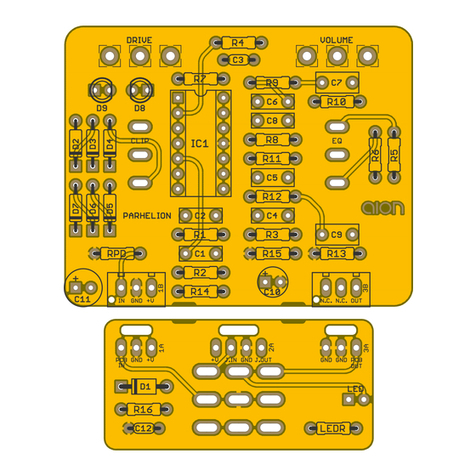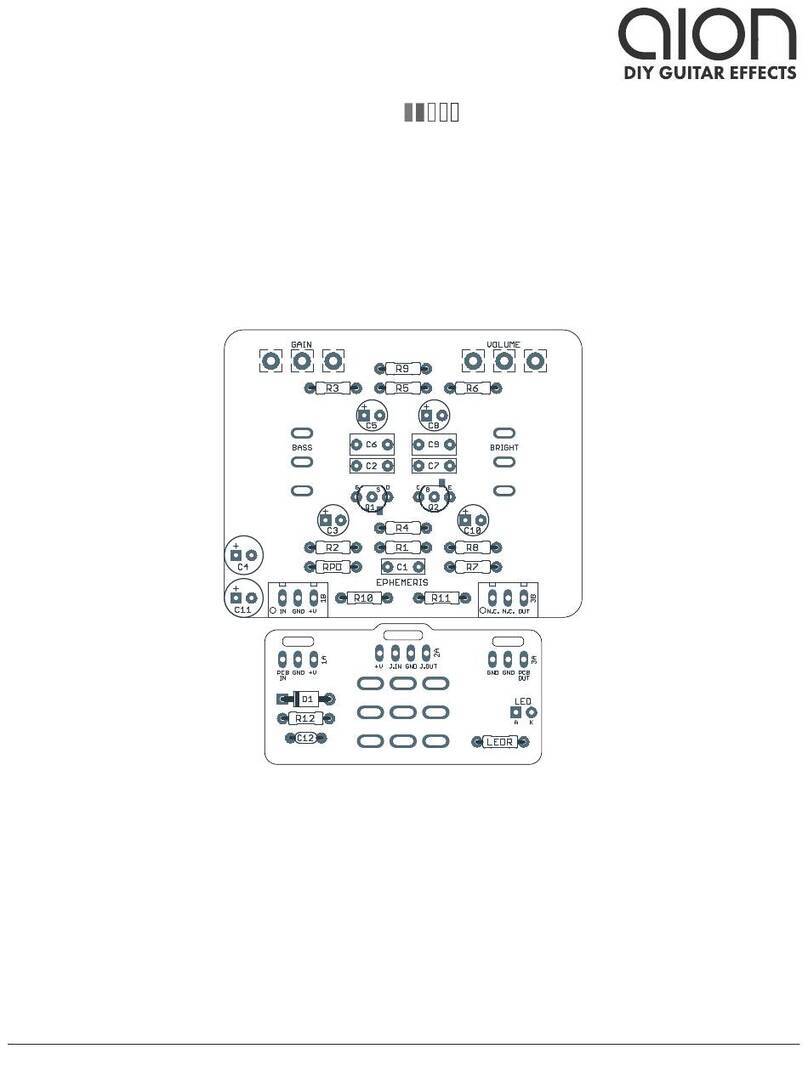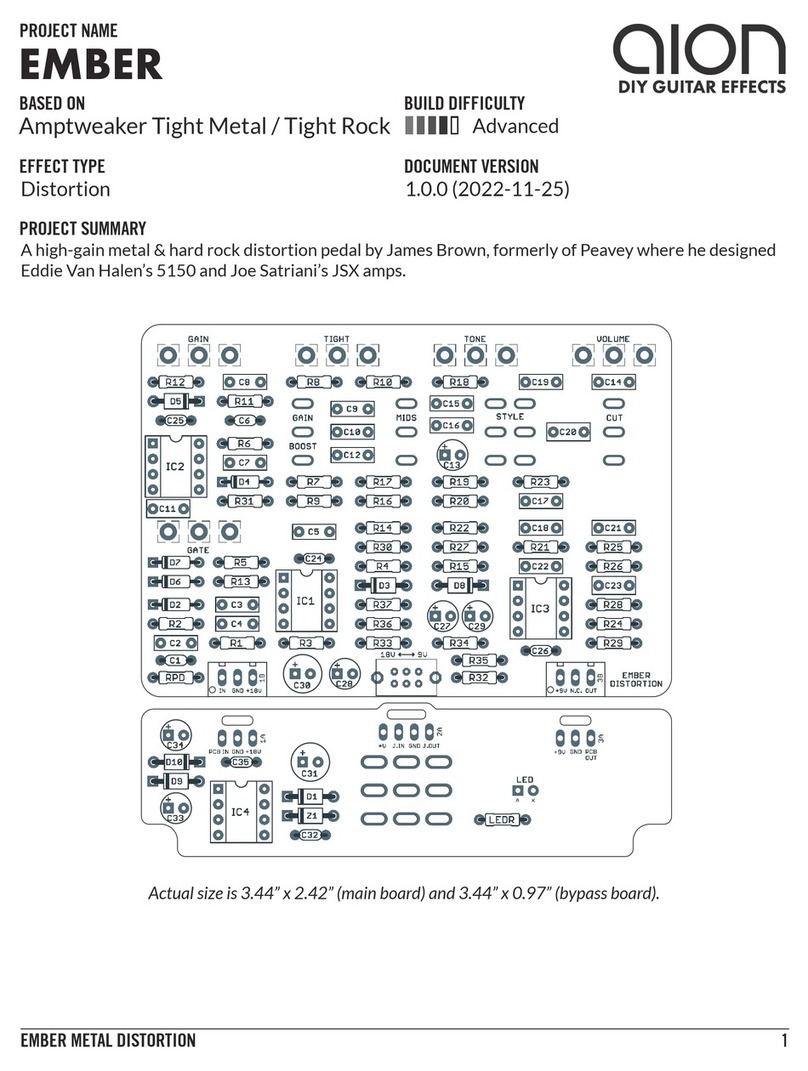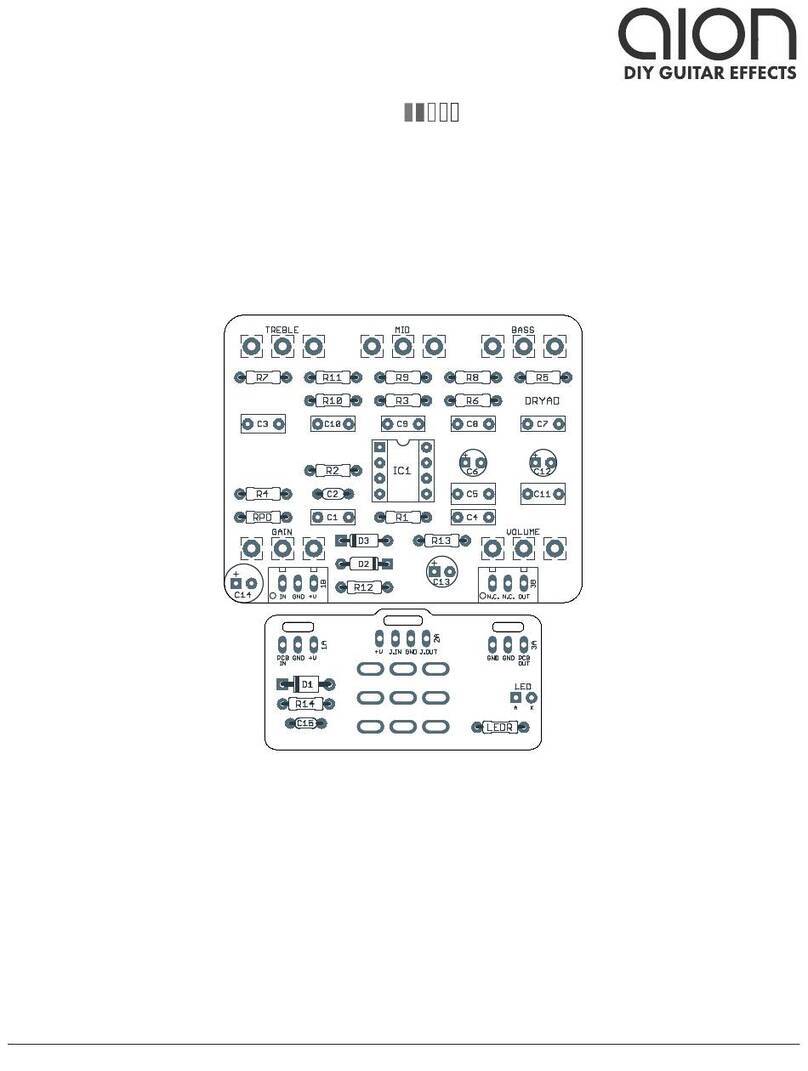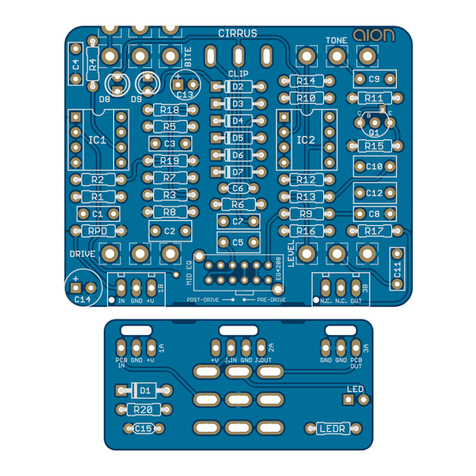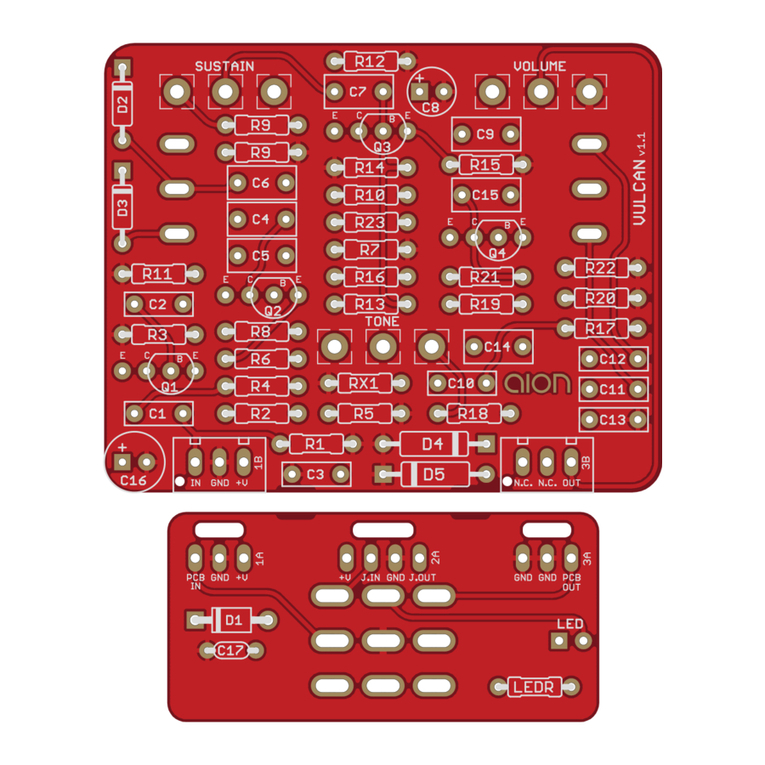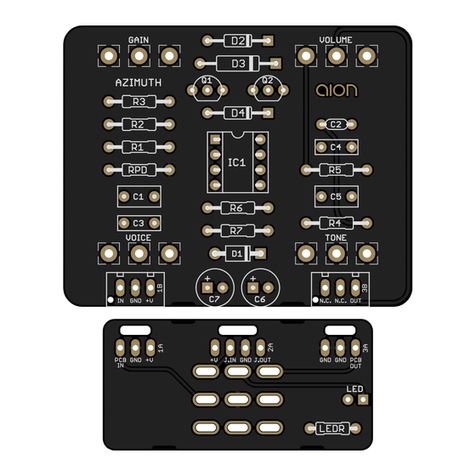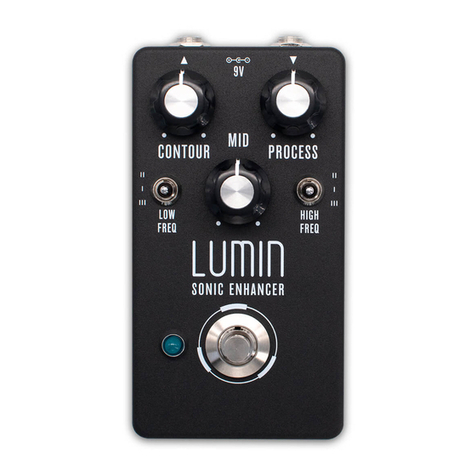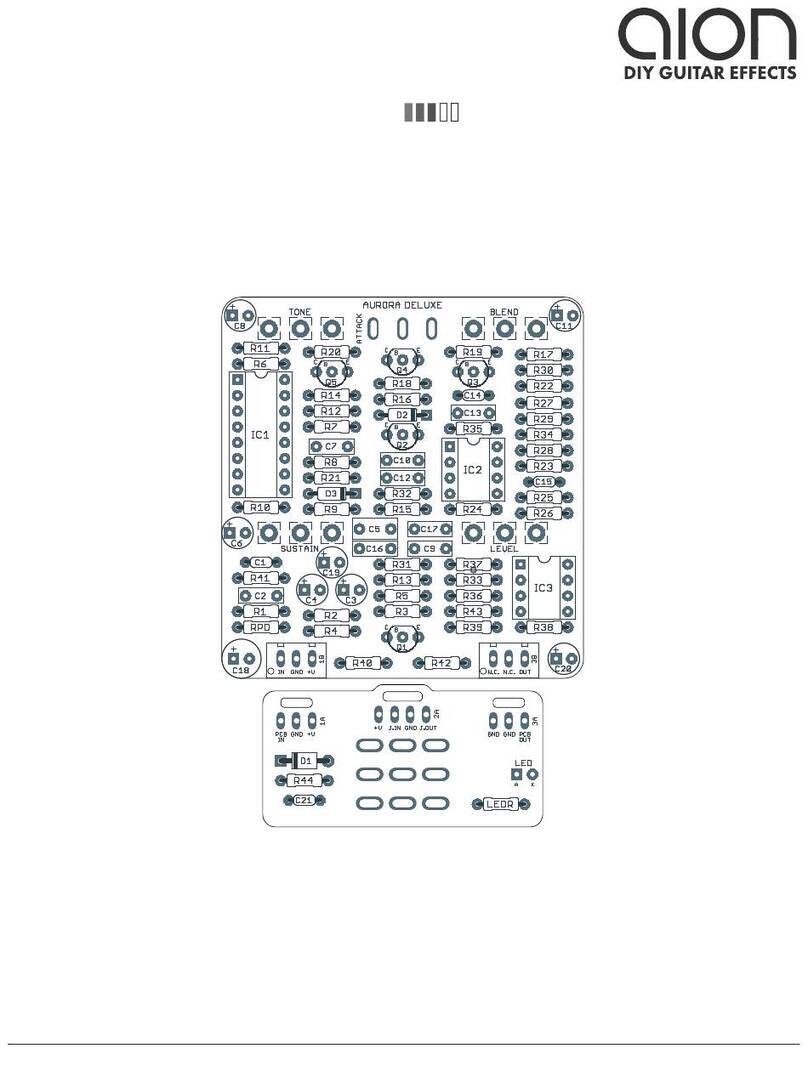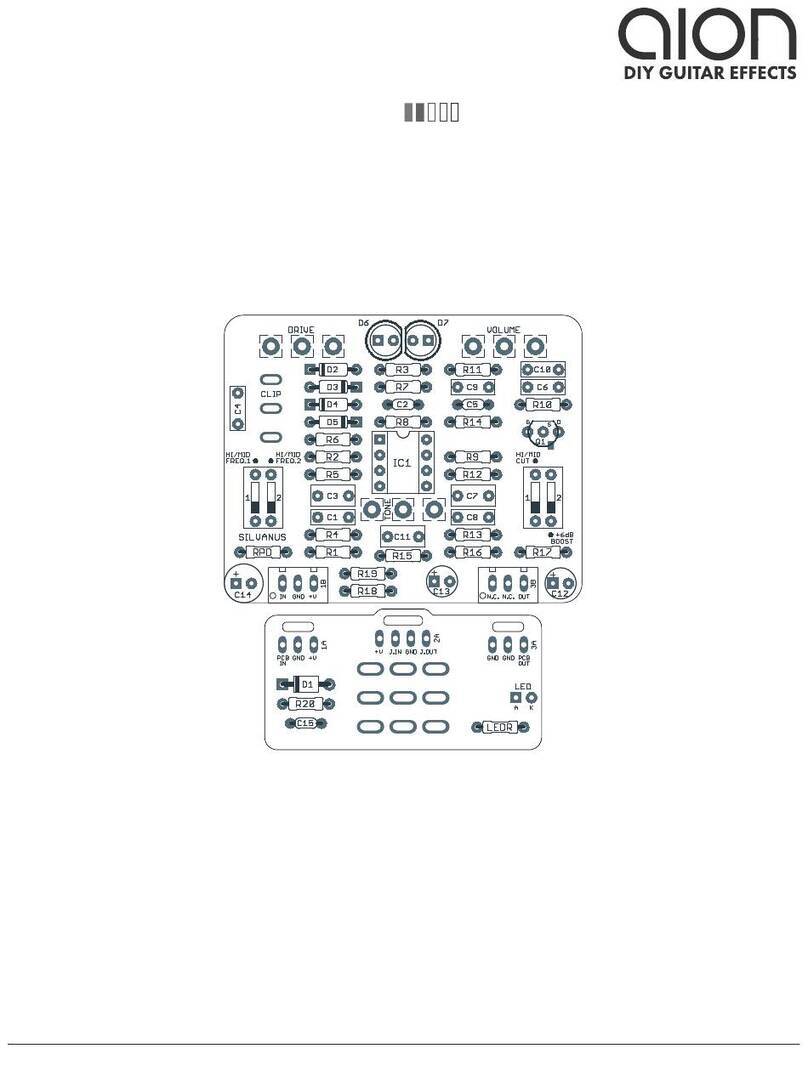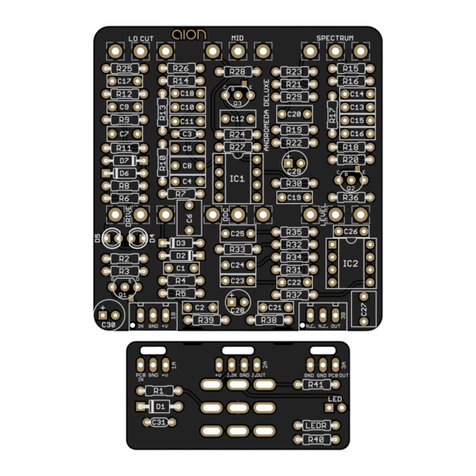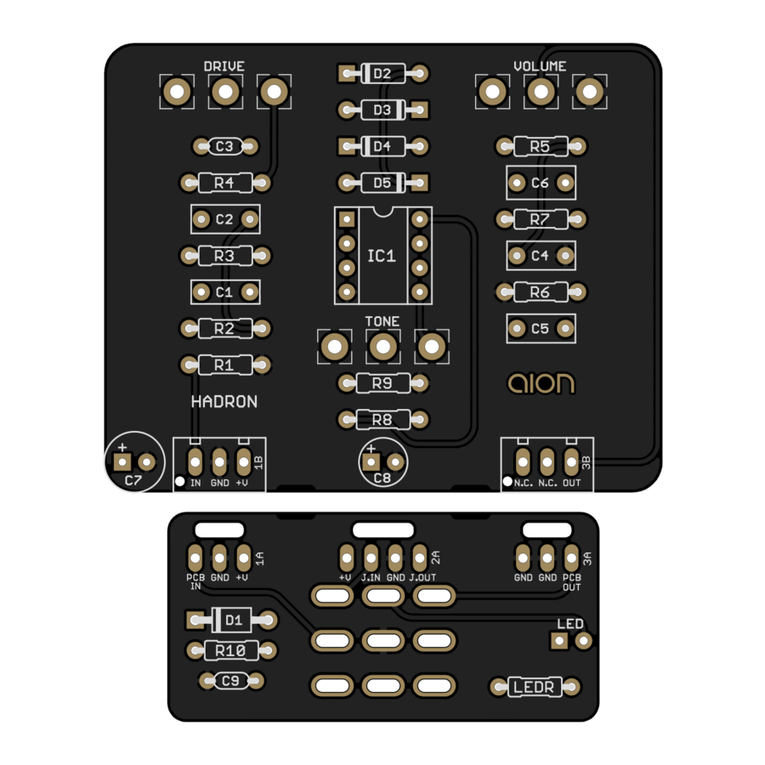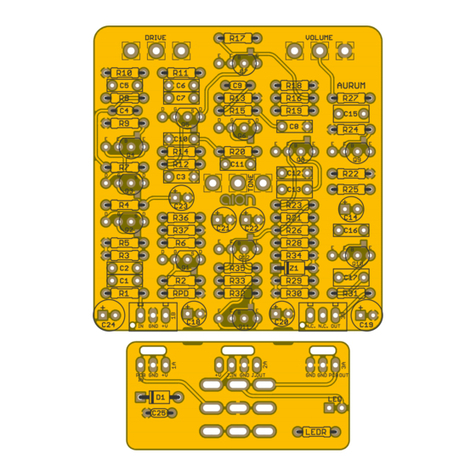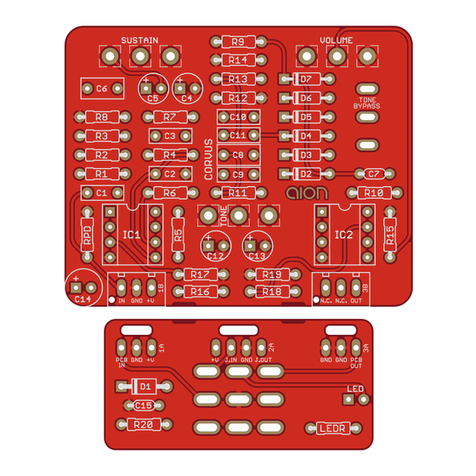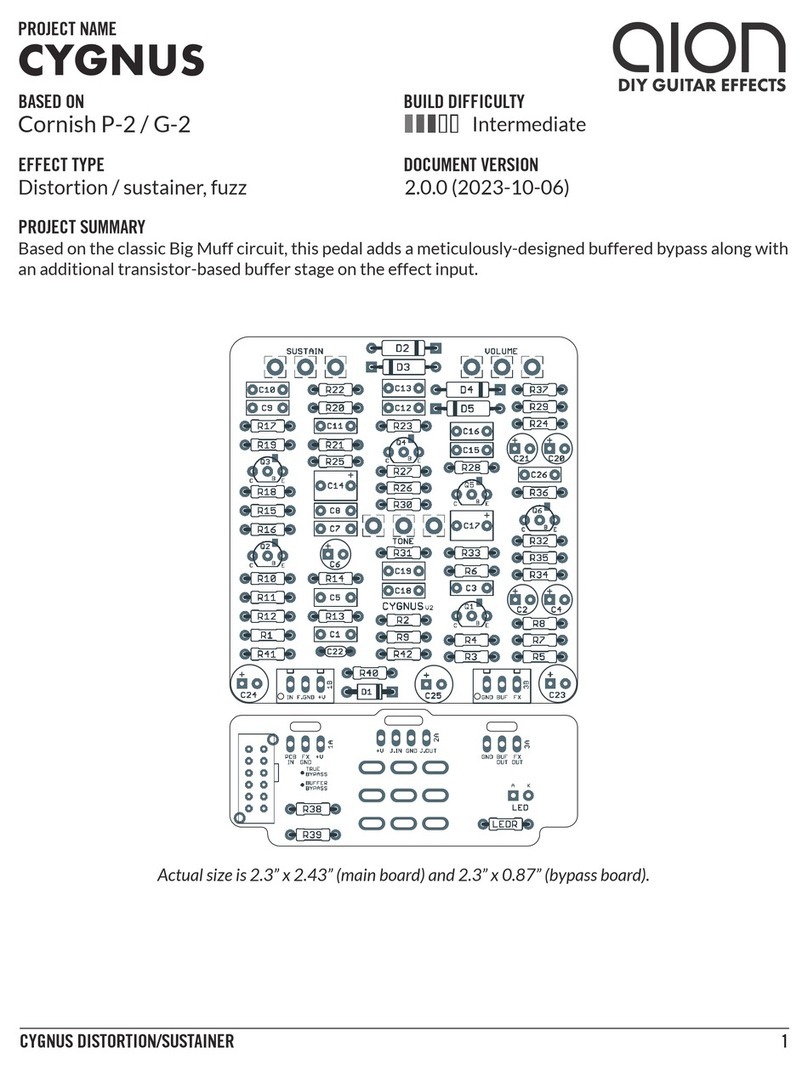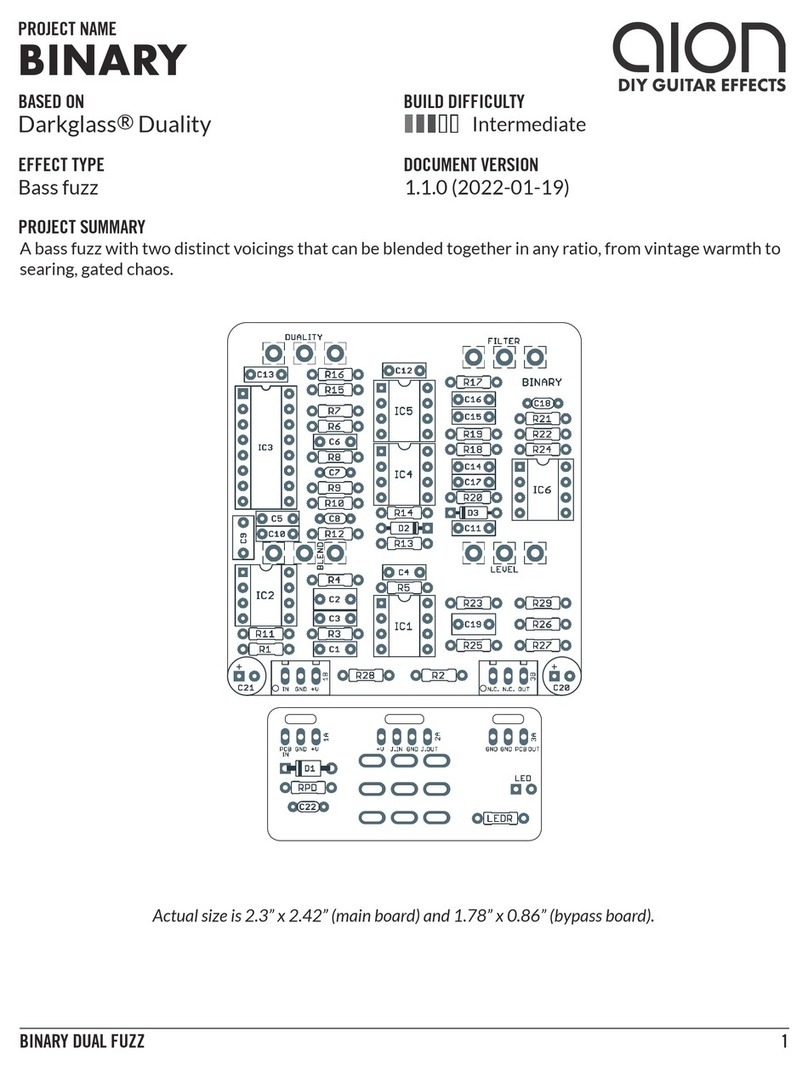
LITHIUM ANALOG CHORUS 4
PARTS LIST, CONT.
PART VALUE TYPE NOTES
R33 56k Metal film resistor, 1/4W
R34 56k Metal film resistor, 1/4W
R35 47R Metal film resistor, 1/4W
R36 10k Metal film resistor, 1/4W
RPD 2M2 Metal film resistor, 1/4W Input pull-down resistor. Can be as low as 1M.
LEDR 4k7 Metal film resistor, 1/4W LED current-limiting resistor. Adjust value to change LED brightness.
C1 33n Film capacitor, 7.2 x 2.5mm
C2 10n Film capacitor, 7.2 x 2.5mm
C3 10n Film capacitor, 7.2 x 2.5mm
C4 1uF Film capacitor, 7.2 x 3.5mm
C5 1uF Film capacitor, 7.2 x 3.5mm
C6 3n3 Film capacitor, 7.2 x 2.5mm
C7 470pF MLCC capacitor, NP0/C0G
C8 15n Film capacitor, 7.2 x 2.5mm
C9 OMIT Use 4.7uF tantalum for MN3207 version. See build notes.
C10 4n7 Film capacitor, 7.2 x 2.5mm
C11 2n7 Film capacitor, 7.2 x 2.5mm
C12 180pF MLCC capacitor, NP0/C0G
C13 1uF Film capacitor, 7.2 x 3.5mm
C14 2.2uF bipolar Electrolytic capacitor, 5mm See build notes for other options.
C15 47n Film capacitor, 7.2 x 2.5mm
C16 10uF Electrolytic capacitor, 5mm
C17 100pF MLCC capacitor, NP0/C0G
C18 47pF MLCC capacitor, NP0/C0G
C19 220uF Electrolytic capacitor, 6.3mm
C20 47uF Electrolytic capacitor, 5mm
C21 220uF Electrolytic capacitor, 6.3mm
C22 10uF Electrolytic capacitor, 5mm
C23 10uF Electrolytic capacitor, 5mm
C24 100n MLCC capacitor, X7R
D1 1N5817 Schottky diode, DO-41
D2 1N914 Fast-switching diode, DO-35
D3 1N914 Fast-switching diode, DO-35
Q1 2N5087 BJT transistor, PNP, TO-92
Q2 2N5088 BJT transistor, NPN, TO-92
Q3 2N5088 BJT transistor, NPN, TO-92

